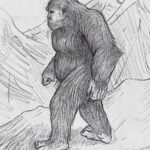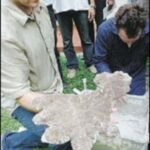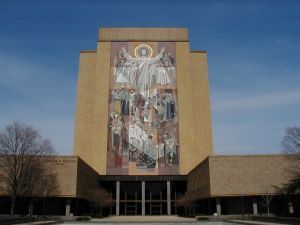Literally translated, cryptozoology is the study of hidden animals. However, most mainstream scientists consider the majority of creatures that interest cryptozoologists to be so well hidden that they are, in fact, nonexistent. Bigfoot and the Loch Ness Monster are two of the most highly publicized darlings of crytozoology, a branch of scientific investigation that many consider a to be a pseudoscience (false science).
The Cryptozoologist’s Argument
Although cryptozoology is largely eschewed by the scientific establishment, cryptozoologists (those who seek to study these hidden creatures) remind doubters that there are many very real, large animals that had remained hidden from human detection for most of recorded history, before being recently discovered. And the vast range of creatures that fall within the realm of cryptozoology, ridiculous to real, make it difficult for doubters to completely dismiss the search for these bizarre animals as being entirely implausible.
For example, the coelacanth, an ancient, deep-water fish, had been considered long extinct; belonging to the realm of those studying dinosaurs, not living animals. Yet in 1938, this “fossil” was discovered to be alive and well, and there are now two currently recognized species in the coelacanth genus Latimeria. Cryptozoologists also point out that Mountain Gorillas (Gorilla beringei beringei), huge African apes that live in large family groups, were discovered by the outside world in 1902, and the deep sea giant squid (Mesonychoteuthis hamiltoni), a creature of legend, was not photographed live until 2005!
When Science Becomes Pseudoscience
While scientists agree that there are many organisms still to be discovered in the natural world, most of these hidden creatures are microbes, plants and small critters located in some of the few large expanses of wilderness left on the planet. There is, however, no substantial evidence for the existence of the poster creatures of cryptozoology, such as large sea creatures in inland lakes (such as the Loch Ness Monster) or huge wild ape men in temperate forests (such as Bigfoot).
In addition, cryptozoology also does not always operate by the rules of scientific method. Scientific method is a critical approach, a tool of objectivity, that is used by all scientists. Through the scientific method, true science actually attempts to disprove what it investigates. If a hypothesis (educated guess) repeatedly investigated by science is not disproven, it is then assumed to be true, unless science later finds it to be false. Some cryptozoologists, build their arguments in the same way as those who practice other types of pseudoscience; gathering only the evidence tailored to build a case for their beliefs, rather than approaching their investigation from a skeptical viewpoint.
Example of Scientific and Pseudoscientific Argument: The Coelacanth
The coelacanth can be used as an example again. Scientists considered the coelacanth to be extinct until irrefutable proof came to light that the creature did indeed still exist. That proof was an actual coelacanth that had been inadvertently caught and then carefully examined. But science did not consider the discovery of the living coelacanth to be evidence that additional hidden creatures exist, while cryptozoology often cites the finding of one type of “hidden animal” to be evidence for the probable existence of others.
Science and pseudoscience arguments aside, it is fun to believe in these bizarre creatures, and exciting when, occasionally, one of these bizarre, giant or ancient animals is discovered.
To learn more about cryptozoology, see:
- The Cryptozoology Website
- Philip R. Burns Cryptozoology pages
- Skeptics Canada article by David Bailey, “Cryptozoology: A Science or Pseudoscience?”






